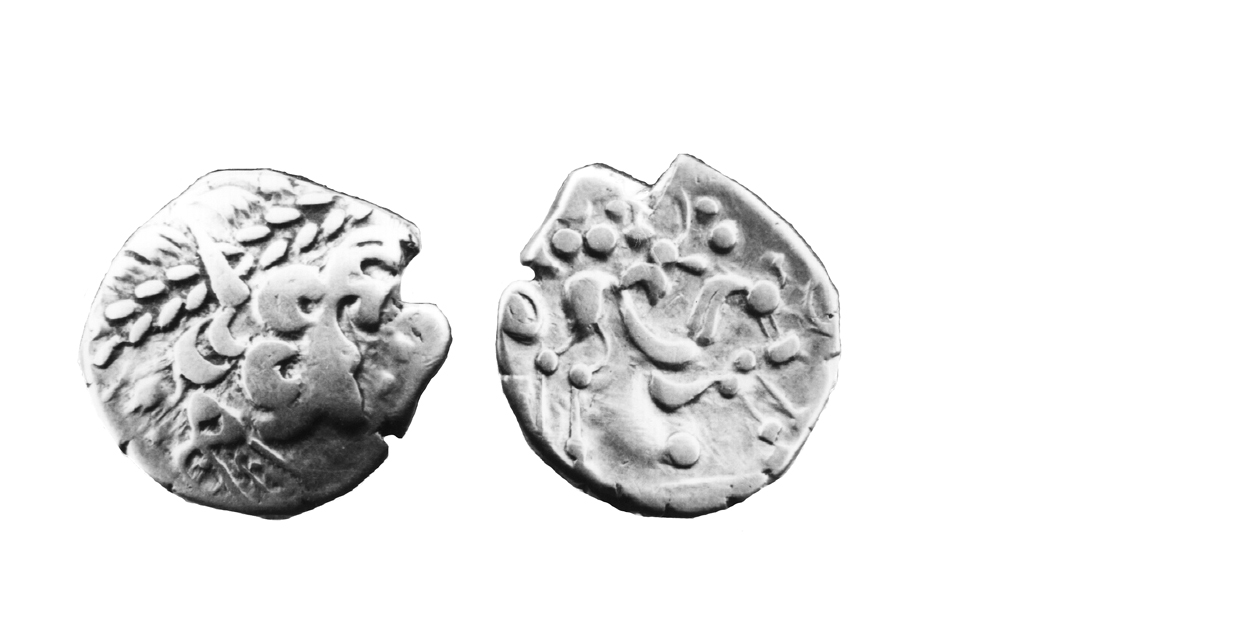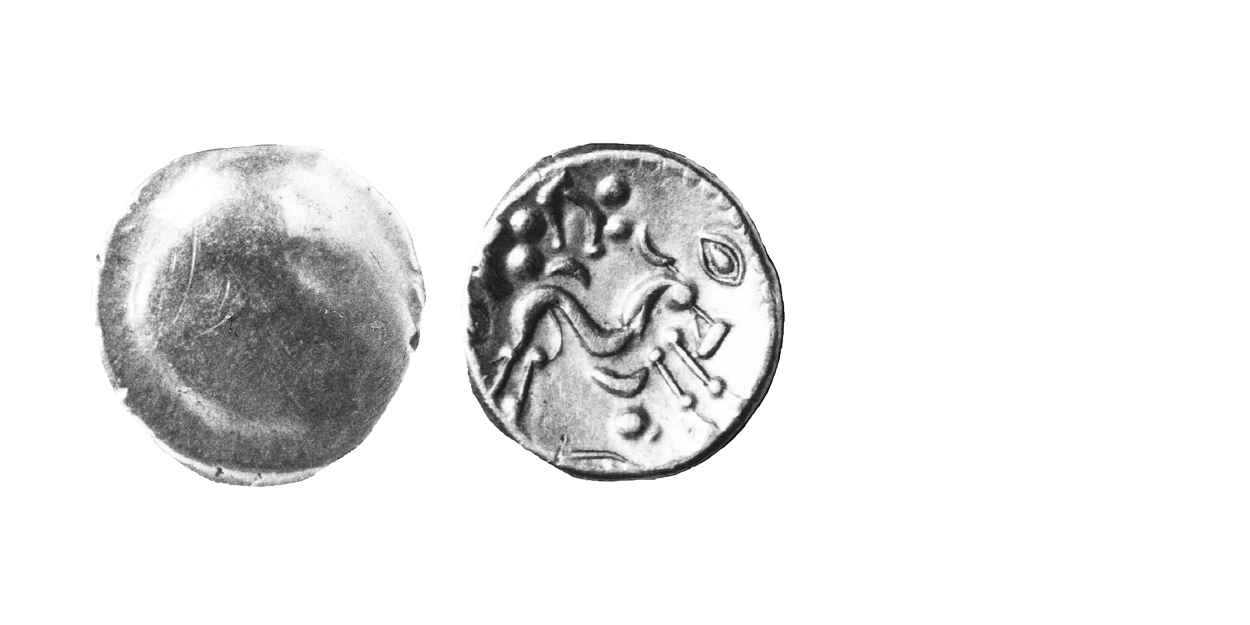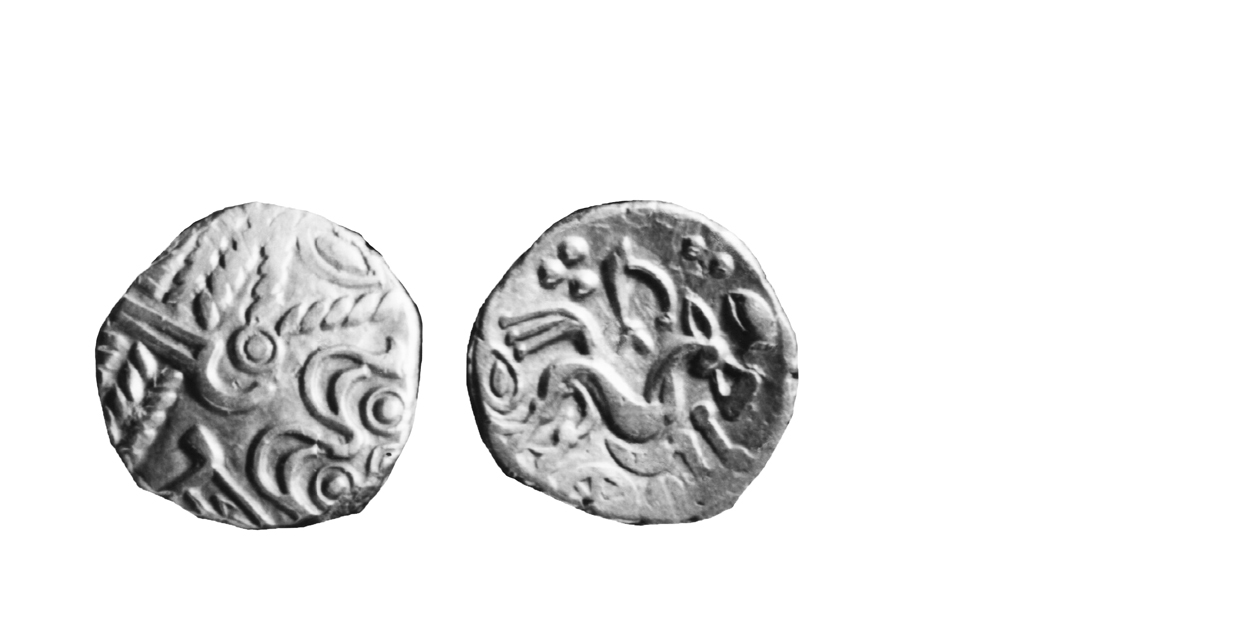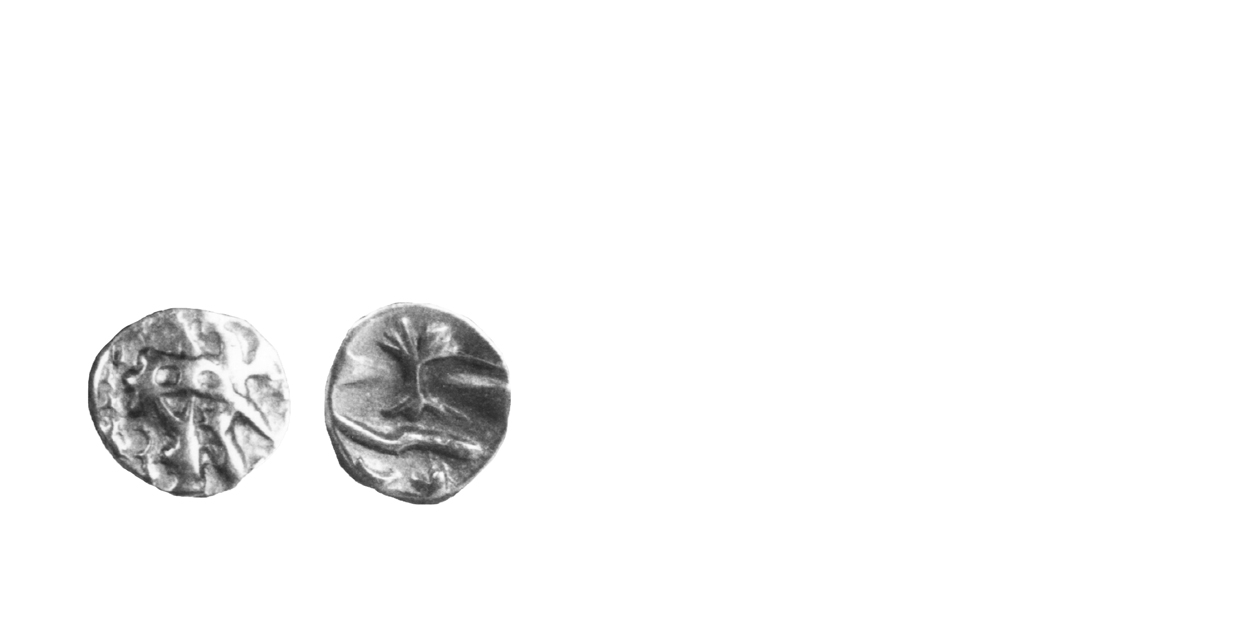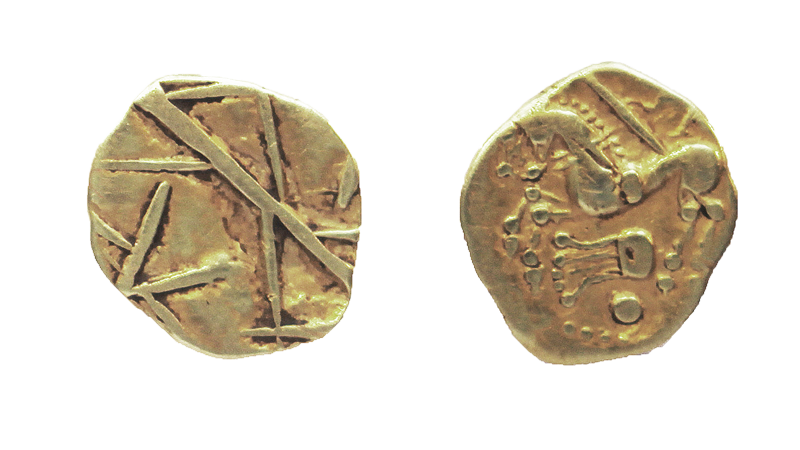
History
Later Imported Types (Info)
In about 100 BC., a new series with only gold staters was imported from Belgic Gaul. The Abstract Design Type appears to have replaced the Large Flan Type in the territory of the Trinovantes/Catuvellauni and Cantii (12). In general, they were smaller and lighter than the earlier type. The Abstract Design Type has been suggested as the coinage of Diviciacus of the Suessiones, whom Caesar described as ruling on both sides of the Channel (13).
The coins were issued in five distinct varieties (14); the increasing stylization of the design matched by a corresponding decrease in weight. The head of Apollo on the two earliest varieties was still representational, in fact very close to that of the Large Flan Type. The design on the third variety was more abstract and the head less unrecognizable. On the last two varieties, the Apollo head was stylized to the extent that it is barely recognizable as a portrait.
The commonest of the five types, on both sides of the Channel, tend to be the later ones (15). The earlier, heavier types were either melted down and reminted or they were initially struck in smaller quantities. The commonest variety, the third, appeared about 80 BC., and the last was imported about 65 BC.
A new series of staters, the Gallic War Type, appeared about 65 BC. (16) actually in advance of the war, but the commonest varieties date to the war years – hence the name. These uniface coins, with the design confined to the reverse, display a spirited, highly stylized horse. The first Gallic War Type staters are only slightly lighter than the latest issue of the Abstract Design Type. However, the series suffered a rapid decline in weight after the beginning of the war. The coins circulated in vast numbers on both sides of the Channel and it seems likely the issue was struck by the Gallic tribes to finance the resistance against Caesar (17). Presumably, this included payment to the British tribes for mercenaries and supplies. Caesar pointed to British assistance as one of the reasons for his sorties across the Channel in 55 and 54 BC. Quarter staters which carry the Gallic War Type design have proved to be modern forgeries (18).
A final type of stater, the Triple-Tailed Horse Type, used extensively on the Continent in the territory of the Suessiones, appeared in Britain about 60 BC. The issue is represented in Britain by only a couple of coins, but the type is important to British numismatics because it became the prototype for the coinage of several of the southern tribes during the Gallic War (19).
The final imported Belgic issue was the Geometric Type, comprising quarter staters only. These appeared in Britain about 65 BC.; either at the very end of the Abstract Design Type or at the inception of the Gallic War Type. It circulated along the Sussex coast and to a lesser extent throughout the southeast, and must have been the corresponding fractional denomination to one of the stater issues. On balance, it was probably the quarter stater of the Gallic War Type, but this has not been proven. The obverses possibly represent a highly-stylized wolf-and-twins motif, or if the coins are inverted, a boat with oars having three occupants or sails. The most speculative suggestion is the Geometric Type represented an abstraction of the obverse and reverse of the Monnaies a la Croix series of southern Gaul.
Some coins also flowed into Britain along the trade route between the Armorican peninsula and the trading ports of Hampshire, Dorset and Devon. Coins of the Osismii, Coriosolites. Baiocasses, Veneti and Redones appeared, principally in the ports with only a thin scattering inland (20). Few coins were involved and these tended not to travel far, so it is possible they were considered curiosities. Armorican coin finds do not provide much evidence for a money economy in southwest Britain in the early first century. These Armorican coins, initially imported around 100 BC. and continuing at least to the time of the Gallic War, had no stylistic influence on British coinage. Instead, it appears the coinage of Belgic Gaul was used as a prototype, even in the territory of the Durotriges (21).
The trade axes between the southeast and Belgic Gaul, and the southwest coast and Armorica were not mutually exclusive. Armorican coins appear in small quantities along the southeast coast and around the mouth of the Thames. Similarly, Belgic coins appear along the southwest coast. It is likely there were coastal traders plying between the major ports, moving coins along with goods. Armorican tribes possibly had direct trading contact with the southeast coast, and the Belgic ones had similar contact with the southwest coast.
Next section: Earliest British Coinage

